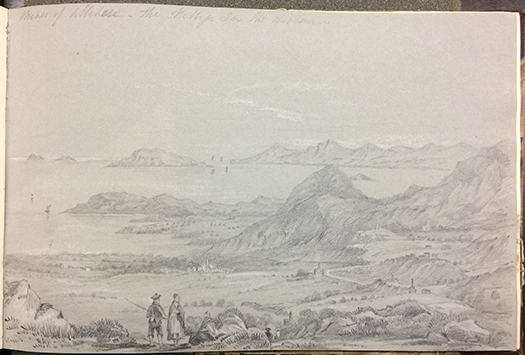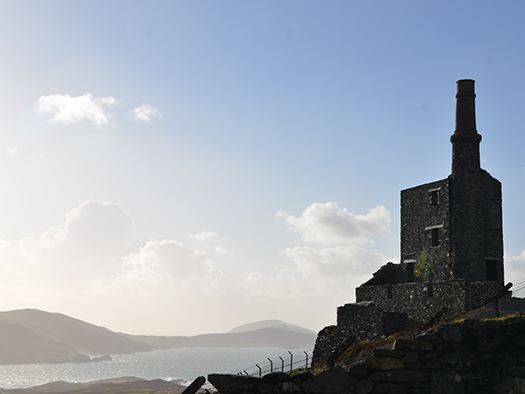
The image above shows Allihies mines in the early nineteenth century. Drawn by Earl of Bantry, it is taken from one of his sketchbooks, held in University College Cork’s Special Collections.
Mining operations were often a source of pollution, and in many cases are still scrutinised as such today. Forstner and Wittman (1979, p.34) explain that since ‘arsenic was regarded as an undesirable constituent [of copper and tin] until the mid-nineteenth century, the associated arsenic-rich wastes were dumped alongside the copper and tin mines’. Although they refer to the mines in south-west England, many of the miners in West Cork originally came from Cornwall and so it is likely that they followed the same practices.
Throughout the eighteenth and nineteenth centuries we see examples of copper-mining in West Cork. Richard Pococke, writing in 1758, noted Dr Barry’s copper mines near to Dundeedy. ‘They see the veins on the cliffs and follow it commonly’, he writes. ‘When they see sparr in a stratum there is ore’. Although these mines had been worked for four or five years, he reported that very little ore had been obtained.
More successful were the copper mines on Horse Island, near Schull, and the extensive mines that were opened by Lord Audley near to the summit of Cappach Hill. The West Cork Mining Company operated these mines in the nineteenth century, as well as opening slate quarries at Audley’s Cove and Tilemuck in Schull and at Audley’s Cove. Their proximity to Roaring Water Bay facilitated the easy export of products to ready markets in England (Lewis, 1837).
Perhaps the most well-known example of copper-mining on the West Cork coast are the copper mines established at Allihies by the Puxley family in 1812. These caused a dramatic increase in the population of Castletownbere from a few scattered cottages to more than 300 houses (Lewis, 1837).

Landscape is continually evolving and changing: today, the ruins of buildings associated with the mining industry at Allihies look picturesque, but their history is more complex. Activities associated with mines, lime kilns and tanneries were agents of environmental damage in the past.
Whereas plastic pollution is a priority for us today, in the nineteenth century the major concern was on the impact of pollution on the water-supply, and its threat to the health of the population. Today our main concern is on the health of the delicate ecosystem of which we are just one part.

